
Nectocaris pteryx is a species of possible cephalopod known from the "early Cambrian" Emu Bay Shale and Chengjiang biota, the "middle Cambrian" Burgess Shale.
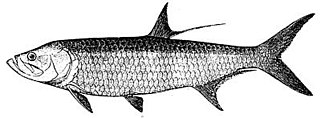
The Elopiformes are the order of ray-finned fish including the tarpons, tenpounders, and ladyfish, as well as a number of extinct types. They have a long fossil record, easily distinguished from other fishes by the presence of an additional set of bones in the throat.
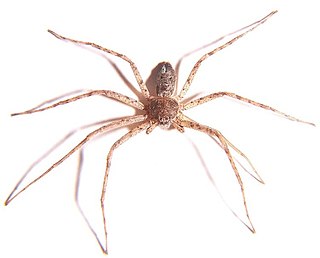
Philodromidae, also known as philodromid crab spiders and running crab spiders, is a family of araneomorph spiders first described by Tord Tamerlan Teodor Thorell in 1870. It contains over 600 species in thirty genera. Most are dull colored- brown, gray, yellowish or mottled with a leaf-like cardiac mark on the anterior dorsal abdomen, and seldom reach above 10 millimetres (0.39 in) long. None of the species build webs, but they do use silk for draglines and egg sacs.

Acanthoceras is an extinct cephalopod genus belonging to the subclass Ammonoidea and family Acanthoceratidae that lived from the Albian to early Coniacian stages of the Cretaceous.

The Sclerosomatidae are a family of harvestmen with about 1,300 known species.
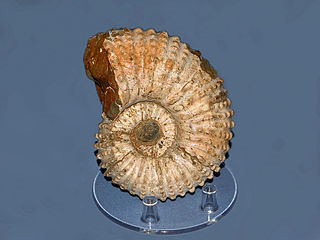
Douvilleiceras is a genus of ammonites from the Middle to Late Cretaceous. Its fossils have been found worldwide, in Africa, Asia, Europe, and North and South America.

Neritopsidae is a family of small sea snails and freshwater snails in the clade Cycloneritimorpha.

†Nerinea is an extinct genus of fossil sea snails, marine gastropod molluscs in the clade Heterobranchia.
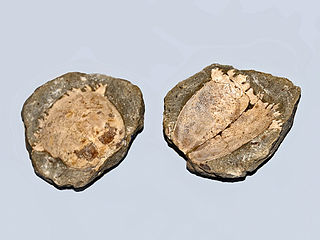
Ranina is a genus of crabs belonging to the family Raninidae.
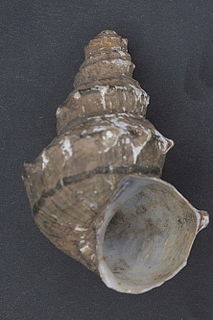
Margarya is a genus of large operculate freshwater snails, aquatic gastropod mollusks in the family Viviparidae.

Schilderia is a genus of sea snails, marine gastropod mollusks in the family Cypraeidae, the cowries.
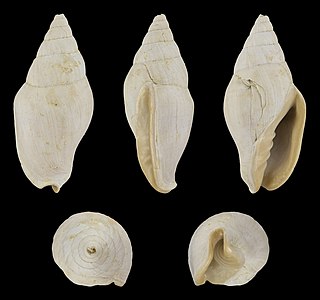
Mitreola is a genus of fossil sea snails, marine gastropod mollusks in the family Volutidae, the volutes.

Bakevelliidae is an extinct family of prehistoric bivalves that lived from the Late Mississippian until the Middle Eocene. Bakevelliidae species are found worldwide, excluding Antarctica. Living a stationary life attached to substrate in marine and brackish environments, they formed shells of an aragonite composition with a low amount of magnesium calcite. The family was named by King in 1850. At least one genus in the family, Hoernesia, has a notably twisted commissure join.

Chama is a genus of cemented saltwater clams, marine bivalve molluscs in the family Chamidae, the jewel boxes.
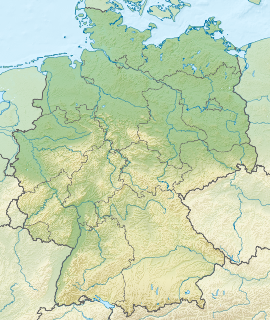
The Stuttgart Formation is a geologic formation in Germany. It preserves fossils dating back to the Carnian stage of the Triassic period.

Hinnites is a genus of rock scallops, marine bivalve mollusks in the family Pectinidae, the scallops.
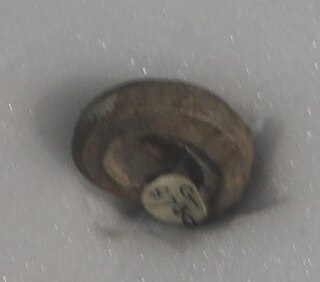
Rotularia is an extinct genus of planispirally coiled fossil polychaete worms in the family Serpulidae. Owing to the gastropod-like shape of Rotularia, many authors in the past interpreted this genus as being sea snails in the family Vermetidae.
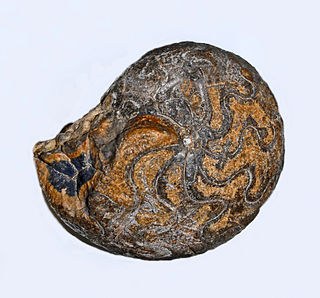
Platyclymenia is a genus of ammonites belonging to the family Platyclymeniidae.


















